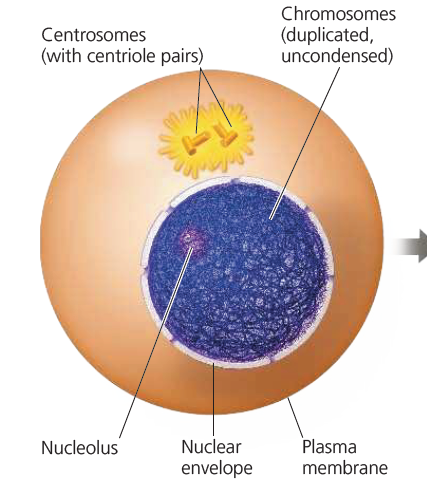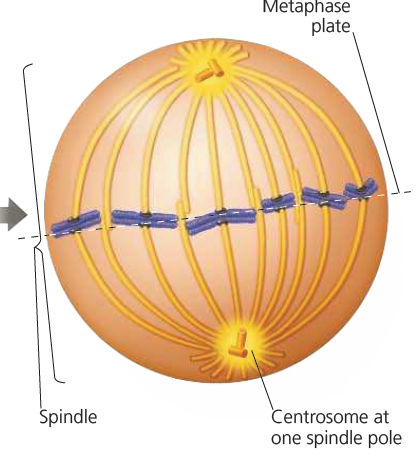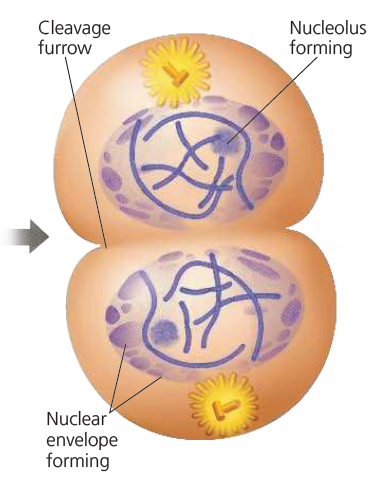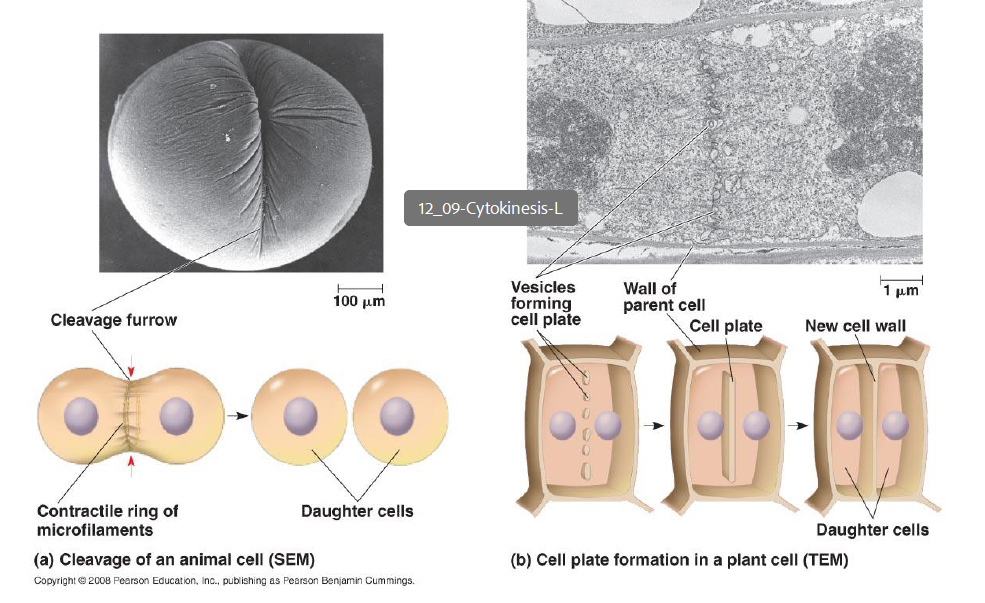The mitotic phase
1/6
Earn XP
Description and Tags
BL1002
Name | Mastery | Learn | Test | Matching | Spaced |
|---|
No study sessions yet.
7 Terms

G2 Interphase
Presence of the nuclear envelope around the nucleus
One or more nucleoli
Formation of 2 centrosomes by duplication, each containing 2 centrioles. They organize the microtubules of the spindle
The chromosomes have duplicated but are not yet condensed

Prophase
The chromatin fibres have more tightly condensed
Disappearance of the nucleoli
The chromosomes appear as sister chromatids
The mitotic spindle (centrosomes + microtubules) begins to form
The centrosomes move away from each other, in part due to the lengthening of the microtubules

Prometaphase
Fragmentation of the nuclear envelope
The microtubules invade the nuclear area
The chromosomes are even more condensed
Formation of a kinetochore at the centromeres of each chromatid (2 per sister chromatid)
Some microtubules attach to kinetochores and jerk the chromatids back and forth to move them
Others interact with those coming from the opposite centrosome, lengthening the cell

Metaphase
The centrosomes are at opposite side of the cells
The chromosomes are randomly aligned at the metaphase plate, equidistant from the poles of the cell

Anaphase
The cohesin proteins are cleaved and the sister chromatids are separated and begin to move towards opposite ends of the cell as kinetochore microtubules shorten
The nonkinetochore microtubules elongate to further lengthen the cell

Telophase
Two daughter nuclei form in the cell. Nuclear envelopes form from the fragments of the parent’s one
Reappearance of the nuclei
The chromosomes become less condensed
The spindle disintegrates
End of mitosis

Cytokinesis
Already under way during telophase
In animal cells, formation of a cleavage furrow, pinches the cell in two
In plants cells, a new cell wall is formed between the two new nuclei